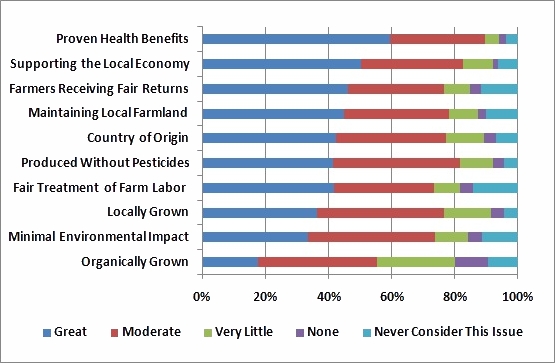 I love the Ithaca Farmer’s market. It’s a regular Sunday ritual in our household to drive down to the market’s home on the shore of Cayuga Lake, listen to local musicians, have breakfast courtesy of the baked goods booth, and of course fill our re-usable bags with local produce. And we’re not the only ones: The “buy local” movement is rapidly growing nationally, based on the idea that we can reduce energy use and enjoy fresher food by purchasing items grown near our home towns.
I love the Ithaca Farmer’s market. It’s a regular Sunday ritual in our household to drive down to the market’s home on the shore of Cayuga Lake, listen to local musicians, have breakfast courtesy of the baked goods booth, and of course fill our re-usable bags with local produce. And we’re not the only ones: The “buy local” movement is rapidly growing nationally, based on the idea that we can reduce energy use and enjoy fresher food by purchasing items grown near our home towns.
For those of you interested in research and evidence-based policy on this topic, I recommend to you the most recent issue of Choices Magazine, published by the Agricultural and Applied Economics Association. Unlike some other journals, Choices Magazine is available on-line, free of charge. The issue — Local Food—Perceptions, Prospects, and Policies — presents survey data, review articles, and policy analyses about local food, from a variety of perspectives.
One question taken up by several authors is: What does “local” mean, exactly? Although “local food” is typically defined along the lines of a “geographic production area that is circumscribed by boundaries and in close proximity to the consumer,” the article by Michael S. Hand and Stephen Martinez shows that consensus stops there.
I found the article by Yuko Onozaka, Gretchen Nurse, and Dawn Thilmany McFadden among the most interesting. They conducted a national survey to better understand the underlying factors that motivate consumers to buy local food. They also looked how these motivations vary among buyers living in different market venues.
Why do people buy local food? Somewhat surprisingly, they found the major motivation to be an interest in health benefits, followed by several “altruistic” reasons, like supporting the local economy and helping local farmers (see figure below).
Overall, the take-home message is that most consumers think highly of locally grown products, and there is a large and growing market for food grown close to home. And hey, it gets people like me out of the house on Sunday morning!



